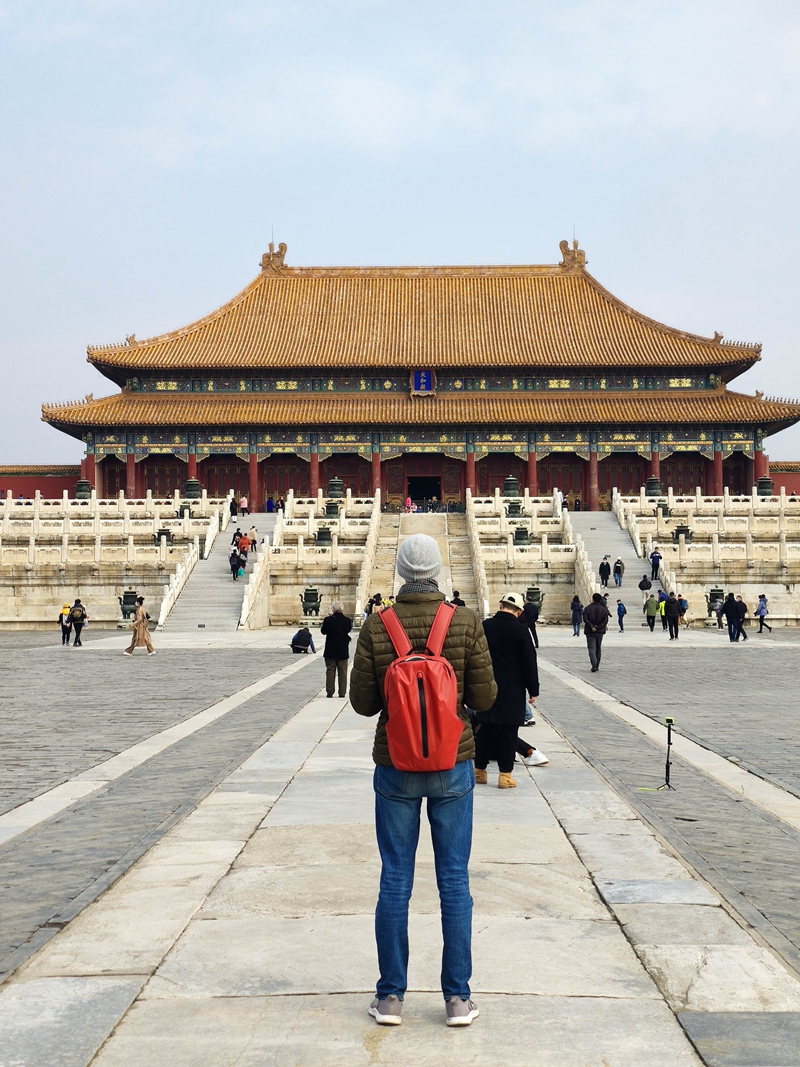The Forbidden City—not so forbidden anymore

Let's face it: it's a cliché. A foreigner in Beijing who visits the Forbidden City, also known as the Palace Museum today, and snaps a couple of pictures to post on Instagram is a cliché. My own experience, nevertheless, has been anything but.
I must've been 5 or 6 when I first saw a photograph of it. I remember flipping through a colorful kids' magazine and stumbling upon a double-spread that depicted the Chinese wonder in impressive detail. I turned to my father, who didn't look as impressed, and asked why this stunning place was forbidden. It would take me 30 more years to find out the answer.
After taking the renowned A Crash Course to the Forbidden City courtesy of Beijing Postcards, a small, history-focused company in Beijing, paying a couple of solo visits, watching The Last Emperor and reading The Last Eunuch of China, I decided it was time to share my passion for that magical place with the world. And so I did. I invited a group of colleagues to join me as I gave them a pro-bono tour of China's historical seat of power.
On a warm spring day, we made our way to the Palace Museum armed with some paper maps and the knowledge of an amateur guide—i.e., me. We spent a good three hours exploring the central axis that extends all the way from the Gate of Heavenly Peace (Tiananmen) in its south to the Gate of Divine Prowess (Shenwumen) in the north while admiring the main six halls and palaces across the outer and inner courts.
The Forbidden City (Gugong in Chinese means former palace) is an imperial palace complex in Beijing of Ming and Qing dynasties from 1420 to 1911. Five times the size of Buckingham Palace, it is the biggest palace and the largest wooden structure in the world.
What I personally find mind-blowing is the harmony and calm it invokes in oneself. From such names as the Palace of Heavenly Purity and the Hall of Terrestrial Tranquility to the breathtaking symmetry of the design, everything there screams (or rather, whispers) order. The whole place is a living testament to the craftsmanship of generations of skilled Chinese masons and artisans and, above all, an embodiment of ancient Chinese philosophy, one steeped in balance and order.
There are some hidden "Easter eggs"—if you will—that will make your visit all the more fun. For instance, there are three to 10 little animal statues on the roofs of each palace in the Forbidden City, and generally speaking, the more significant the person under that roof, the more statues. Because only the "God of Heaven" could be granted 10,000 rooms, it has a total of 9,999 and a half rooms only. Even though some of these "fun facts" may be urban legends, they still add to the place's intrigue.
As impressive as the Forbidden City's past is its present—the care it receives in the form of year-round restoration works, a superb fire prevention and fighting system and world-class themed souvenir shops that sell quality merchandise. The city that was once off-limits to commoners is not forbidden anymore. Millions of tourists visit it every year, and that number is anticipated to increase.
Before exiting, we managed to get lost in the labyrinth that is the six eastern and western palaces which currently house a range of museums and galleries. In Egypt, we say that whoever drinks from the Nile River is bound to return. And I shall venture to say that whoever visits Gugong is bound to return as well. Or at least that's how I keep the hope of coming back soon to admire it in person alive.
Related articles
-
 Traditional Beijing figurines get a new lease on life
Traditional Beijing figurines get a new lease on lifeMore
-
 Forbidden City: Heart of the Central Axis
Forbidden City: Heart of the Central AxisMore
-
 Digital technology revives treasured murals in Beijing
Digital technology revives treasured murals in BeijingMore
-
 Warm Cups of Peking Opera
Warm Cups of Peking OperaMore
-
 The Forbidden City, a shining gem on the Beijing Central Axis
The Forbidden City, a shining gem on the Beijing Central AxisMore
-
 Beijing school launches tech-driven space
Beijing school launches tech-driven spaceMore
